Are you jonesing to experience German traditions and culture first hard? Well, I can tell you some of the best opportunities come outside of the biggest cities in the more rural areas.
While many travelers to Germany may visit to explore the larger cities (such as Berlin) or popular tourist attractions (such as Europa Park) there remains untapped German cultural opportunities, German cultural attractions and German traditions worth partaking in that will take you off-the-beaten-path.
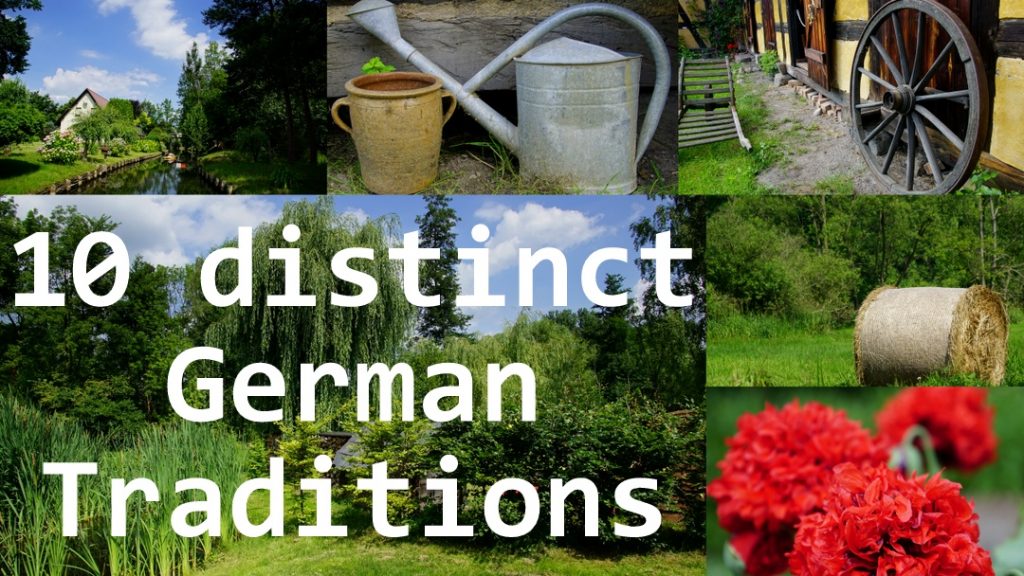
In order to delve deeper into German heritage consider places such as Spreewald, Rügen Island, Stralsund and Wustrow. What you’ll find is a more laid back pace of life with ample opportunities to sample traditional German cuisine.
You can also visit open-air museums, take unique forms of transportation and engage in activities that will get you out of your comfort zone.
The following are ten things for you to consider to make your trip to Germany one to remember:
10 Distinct German Traditions
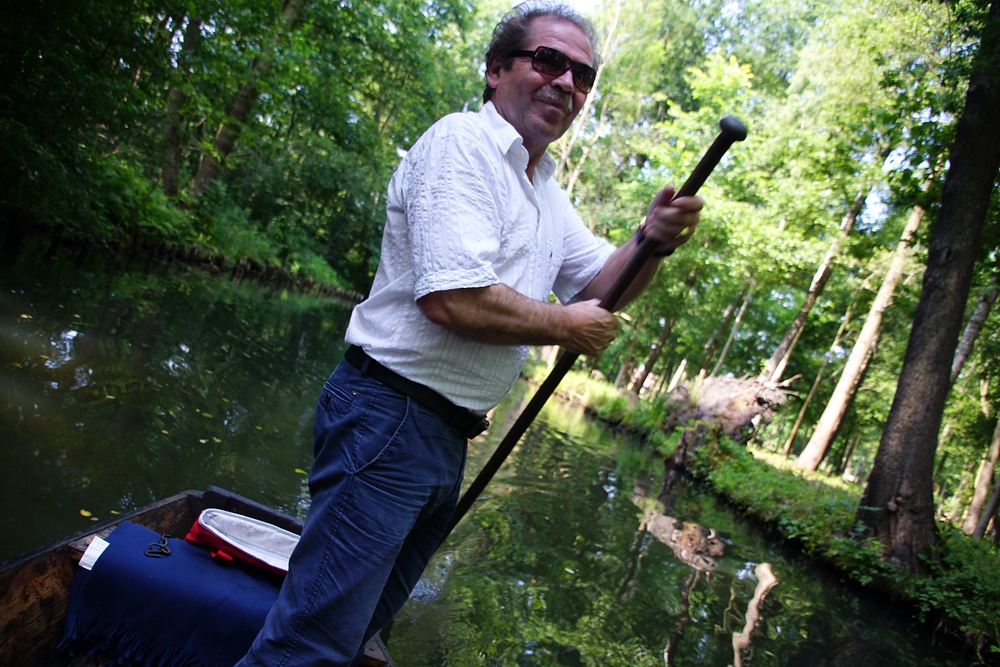
1) Punting Down A Canal
Sit back and relax in a comfortable flat-bottomed boat as you’re pushed down a canal by your guide wielding a pole. This was easily one of the most memorable experiences I had on my return trip to Germany.
The slow pace of the journey allows you to snap plenty of photos, casually chat with other passengers or quietly take it all in. We had the opportunity to try it in Spreewald.
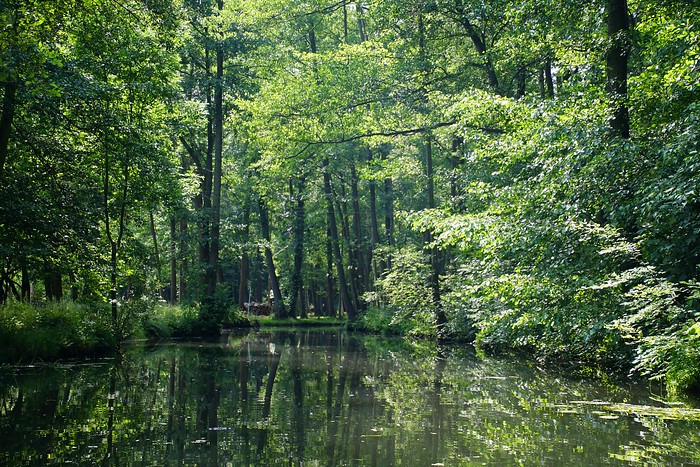
Punting down a canal is a cherished tradition in some parts of Germany. This leisurely activity involves navigating a flat-bottomed boat (known as a “Punt”) using a long pole. It’s a peaceful way to explore the scenic waterways from a unique vantage point.
A Timeless Tradition
Punting in Germany is more than just a boat ride; it’s a traditional activity that dates back centuries, especially in academic circles. Originally used as a practical means of transportation, it has evolved into a cultural activity that offers a glimpse into the historic and academic life of the cities.
Why It’s a Must-Experience
Serene Escape What makes punting so epic? It’s the tranquility of gliding over water, the gentle sound of the pole stirring the riverbed, and the picturesque views of city skylines and nature. It’s a chance to disconnect from the hustle and bustle and immerse yourself in nature and history.
Access to Hidden Gems Punting allows access to parts of the city that are less accessible by other means. You can see hidden architectural details of buildings, secret gardens, and wildlife along the urban waterways that you would miss from the streets.
Great Experience for Visitors
Engaging with History As you float under ancient bridges and past historic buildings, local guides often share stories and facts about the city’s past and the significance of the waterways in its development. This narrative adds a rich historical layer to the experience.
Ideal for Everyone Punting is a leisure activity suitable for all ages and interests. Whether you’re with family, friends, or solo, it offers a relaxing yet engaging experience. It’s also a favorite among photographers and nature lovers.
How to Arrange Your Punting Experience
Choosing Your City
- Popular Destinations: Tübingen and Leipzig are renowned for their beautiful canals and vibrant punting scenes. Each city offers a slightly different experience reflecting its unique history and landscape.
- Seasonal Considerations: While punting can be enjoyed from spring through early autumn, the best times are often late spring and summer when the weather is most favorable.
Booking Your Trip
- Tour Operators: Look for local tour operators that offer punting tours. Many provide various packages, including group and private options.
- Online Booking: Check availability and book in advance, especially during peak tourist seasons, to ensure your spot.
Preparing for the Trip
- What to Wear: Comfortable, casual clothing and a hat for sunny days are recommended. It’s also wise to bring a light jacket in case the weather changes.
- What to Bring: Don’t forget your camera, sunscreen, and perhaps a small snack or drink to enjoy along the way.
A Parting Thought Punting down a German canal is an enchanting experience that offers relaxation, scenic beauty, and a deep connection to the cultural and historical aspects of the region. It’s a gentle adventure that leaves a lasting impression, combining the joys of outdoor activity with the enriching context of a guided tour. Whether you’re seeking tranquility or eager to explore German culture from a new perspective, punting provides an unforgettable way to see the country’s historic waterways.
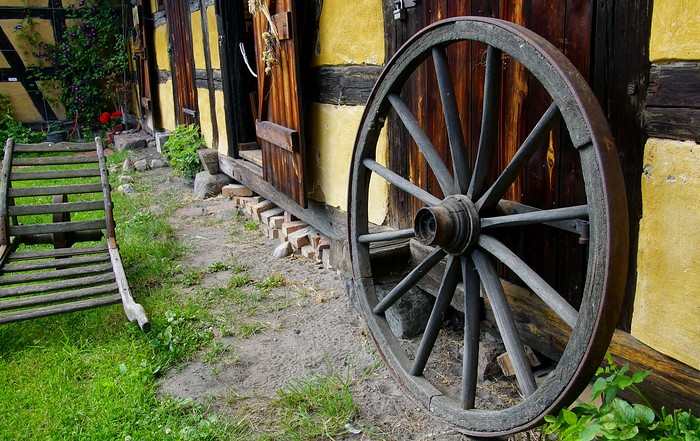
2) Open-Air Museum Experience
Open-air museums in Germany are like a time machine back to a simpler period of life. Old farming tools, thatched homes and realistic theme rooms are some of the top highlights of a visit to this kind of museum.
Some of our favorite activities included learning how to punt, riding a penny-farthing, and competing in a potato sack race. It’s like being a kid all over again. In fact, if you do have a family this might be pushed to the top of your list.
Open-air museums in Germany offer a unique cultural journey. They showcase the rural and historical lifestyle through reconstructed villages and farms. These museums provide a tangible link to the past. It allows visitors to experience German traditions and cultures firsthand, in settings that meticulously replicate historical periods.
Living History
At an open-air museum, you don’t just observe; you interact. Activities range from traditional crafting demonstrations to historical reenactments. Overall, providing a multisensory experience. You can watch artisans work, smell the woodsmoke from traditional hearths, and even taste authentic regional recipes.
Unlike in traditional museums, here the barriers are down. You’re not just looking at artifacts behind glass; you’re stepping into the homes they came from. You’re also touching the tools and walking the streets. It’s fully immersive.
Great Experience for Visitors
Family-Friendly Fun: Open-air museums are great for families. They offer wide open spaces for children to explore and learn through play. Educational programs are often tailored for young visitors, making history fun and engaging.
Photography and Inspiration: For creative souls and photographers, the picturesque settings of these historical villages offer endless inspiration. Each house, farm animal, and costume is a photo waiting to happen, set against the beautiful backdrop of Germany’s countryside.
How to Arrange Your Visit
- Regional Themes: Different museums focus on different regions and time periods. Whether you’re interested in the Black Forest, Lower Saxony, or the Bavarian Alps, there’s an open-air museum that covers these regional histories.
- Famous Examples: Museums like the Black Forest Open Air Museum Vogtsbauernhof and the Lower Saxony Open Air Museum are among the many options that provide a comprehensive look at German rural life.
- Check the Schedule: Many open-air museums have seasonal hours and special event days where they showcase particular aspects of traditional life, such as harvest festivals or Christmas markets.
- Book in Advance: For special events or guided tours, booking in advance is recommended to secure your spot.
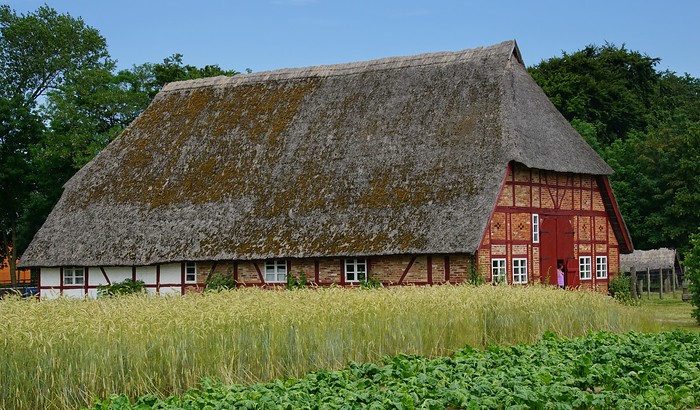
Where you can try this: All over Germany
3) Sauna To Sweat It Out
Strip down naked and enter a small room where you’ll sweat profusely while experiencing dry or wet heat. This may be a bit out of your comfort zone, but I guarantee you’ll stick out like a sore thumb if you do decide to wear a bathing suit.
Instead, embrace being in your birthday suit because locals won’t even notice and you’ll enjoy the health benefits of a thorough detox.
In Germany, the sauna is more than just a place to sweat; it’s a cultural institution deeply rooted in the pursuit of health and well-being. They also serve as a communal space for mental relaxation. The practice involves a cycle of heating up in a dry or steam sauna followed by a cooling period. This often includes a cold shower or a plunge into a natural pool. This process is repeated several times, enhancing circulation and detoxification.
Why It’s a Must-Experience
The Complete Detox: What makes the German sauna experience so epic? It’s the intense heat combined with the invigorating cold plunge. This contrast is not only invigorating but also said to improve immune response, relieve stress, and promote skin health.
Social and Inclusive: Saunas in Germany are typically mixed-gender and are enjoyed nude. This is often a new experience for international visitors. This openness promotes body positivity and equality. Furthermore, it fosters a sense of community and acceptance that is integral to the German sauna culture.
Great Experience for Visitors
Variety of Sauna Experiences: From urban saunas in Berlin to secluded options in the Bavarian Alps, Germany offers a range of sauna experiences. Each location provides a unique setting. Whether it’s a lakeside view, a forest hideaway, or a rooftop in the city.
Integration with Nature: Many German saunas are located in picturesque settings that integrate natural elements. This makes the experience even more restorative. The use of aromatherapy with natural essential oils like birch or eucalyptus enhances the sensory experience.
How to Arrange Your Sauna Experience
- Research Options: Look for well-reviewed saunas that suit your comfort level. Whether you prefer a more private experience or a bustling public sauna, Germany has it all.
- Cultural Fit: If you’re new to the sauna experience, especially the nude aspect, smaller, more private saunas might offer a gentler introduction.
- Booking: While many saunas welcome walk-ins, booking in advance can ensure you get a spot, especially in smaller or more exclusive saunas.
- Timing: Consider visiting during off-peak hours for a more relaxed experience.
- What to Bring: Most saunas provide essentials like towels and robes, but you’ll need to bring your own bathing suit for the communal swimming areas if you prefer not to be nude.
- Hydration: Drink plenty of water before and after your sauna sessions to stay hydrated.
Where you can try it: All Over Germany (We tried it in Spreewelten)
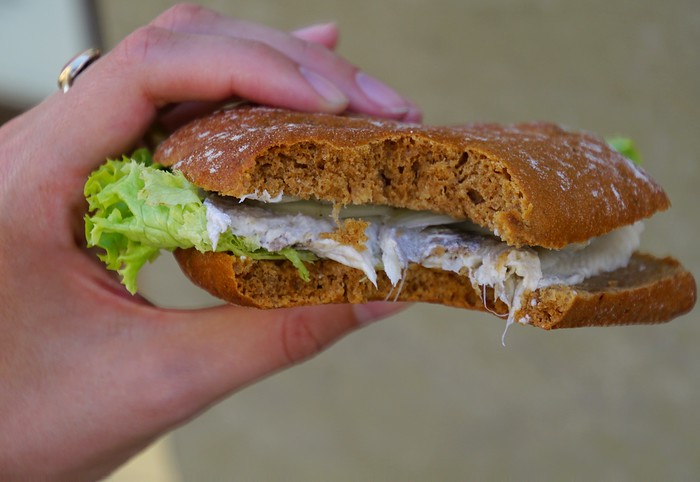
4) Bismarck Herring For Lunch
If you’re a fan of pickled fish be sure to try a Bismarck herring sandwich. The Baltic herring packed in small wooden barrels originated in Stralsund when Johann Wichmann, an admirer of Otto van Bismarck, sent a barrel to celebrate Bismarck’s birthday.
Bismarck apparently loved it to such an extent that he agreed to have it named after him. I recommend trying it in a sandwich – it makes a nice snack or light lunch.
A Taste of German Heritage
What is Bismarck Herring? Bismarck Herring is a pickled herring fillet, typically served cold. The herring is cured with a mixture of vinegar, onions, and spices. It imparts a tangy and refreshing flavor. It’s commonly served as part of a larger meal or as a snack. Typically, it’s accompanied by rye bread, boiled potatoes, or green salad.
Unique Flavor Profile: Why try Bismarck Herring? It’s the perfect balance of flavors. The vinegar gives it a sharp tanginess that complements the natural sweetness of the herring.
Culinary Tradition: Bismarck Herring offers a direct connection to Germany’s maritime history and its relationship with the Baltic and North Seas. This is where herring has been a significant food source for centuries. Eating this dish is a way to engage with the deep-rooted traditions that have shaped German culinary practices.
Health Benefits: Apart from its cultural significance, Bismarck Herring is also noted for its health benefits. Herring is a good source of omega-3 fatty acids, protein, and essential vitamins. Thus, it a nutritious choice for a meal or afternoon snack.
Where To Try Bismarck Herring
- Local Markets and Delis: To try the freshest Bismarck Herring, head to local markets or delis where they sell it freshly prepared.
- German Restaurants: Many traditional German restaurants include Bismarck Herring on their menu, especially in coastal cities or towns with a strong fishing heritage.
- Pairing: Enhance your meal by pairing the herring with a local beer or a glass of crisp white wine, which complements the vinegar’s sharpness beautifully.
- Ask Locals: Don’t hesitate to ask locals for their recommended places to enjoy Bismarck Herring. They can often point you to spots that are popular among residents but might be lesser-known to tourists.
Where you can eat it: Northern Germany (We tried it in Stralsund where it is a speciality)

5) Trabant Car Ride
Why rent a regular car when you can turn back the clock and cruise the town inside a Trabant. This vehicle was built back in the days of the German Democratic Republic, and it is a bit of a boat in terms of handling.
That being said, you’ll garner all sorts of looks as you drive it around.
Iconic East German Engineering: The Trabant, affectionately known as the “Trabi,” was the most common vehicle in East Germany and remains a beloved symbol of the era. Its distinct puttering sound and vintage design make it instantly recognizable. Driving one through Rügen is like reliving a piece of German history.
Why It’s a Must-Try Experience
Unique Sightseeing Adventure: What makes the Trabant ride so distinct and memorable? It’s the combination of the car’s quirky charm and the stunning landscapes of Rügen. From chalk cliffs and sandy beaches to historic resorts and lush forests, the island provides a picturesque backdrop that contrasts wonderfully with the archaic relic that is the Trabant.
Engage with History: Many tours provide insights into the Trabant’s production, its cultural significance during and after the Cold War, and how it became a symbol of German reunification.
Photo Opportunities A Trabant tour is a photographer’s delight. The car itself is a piece of art. Hence, it’s perfect for quirky and memorable photos. Add to that the natural beauty of Rügen, and you’ve got yourself an Instagram-worthy excursion.
How to Arrange Your Trabant Experience
- Local Tour Operators: Several tour operators on Rügen specialize in Trabant tours. They offer various routes and packages, from short drives to full-day excursions.
- Special Events: Some operators also offer themed tours, which might include picnics, sunset drives, or guided historical tours focusing on specific aspects of Rügen’s or East Germany’s history.
- Advance Reservations: Especially during the peak tourist season, it’s wise to book your Trabant tour in advance. This ensures availability and gives you the flexibility to choose the timing and nature of your tour.
- Group Size: Consider the size of your group when booking, as the standard Trabant has limited seating.
Where you can experience it: Rügen Island

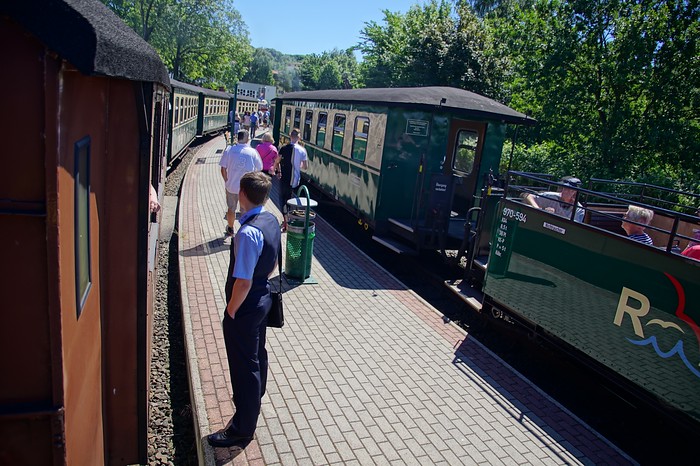
6) Vintage Train Ride
Nothing is cooler than having an opportunity to take a vintage train ride. If you’re visiting Ruegen Island you’ll have a chance to board the Rasender Roland (“Rushing Roland”) on a steam-powered journey that’ll allow you to take in some of the most scenic stretches of the island. This is Rügen Island’s beloved narrow-gauge steam train.
This vintage railway offers a unique way to explore the picturesque landscapes of Germany’s largest island. It’s the perfect blend of scenic beauty and historical transport rolled into one journey.
A Timeless Journey
Stepping Back in Time: The Rasender Roland is a step back into the golden age of rail travel. It Operates with steam locomotives that date back to the early 20th century. This train chugs along at a leisurely pace through forests, over bridges, and past the quaint villages of Rügen. The old-world charm of the train transports passengers to a bygone era.
Scenic Routes: What makes the Rasender Roland a trip worth considering? The route itself. It covers the southeast part of the island, passing through iconic destinations such as Putbus, Binz, Sellin, and Göhren. Each stop offers unique attractions. You’ll find the classical architecture of Putbus to the stunning seaside views in Göhren.
Cultural Icon: The train represents the historical significance of steam-powered rail travel in Germany. Furthermore, it serves as a moving museum celebrating the engineering and heritage of the early 20th century.
How to Arrange Your Train Ride
- Choose Your Route: The Rasender Roland runs several times a day, connecting major towns on the island. Check the schedule to decide which towns you’d like to explore.
- Booking Tickets: Tickets can be purchased at the stations or in advance online. During peak tourist season, buying tickets early is recommended to ensure you get a seat on this popular ride.
- Best Time to Go: Spring through autumn offers the most pleasant weather for enjoying the open windows and the scenic views.
- What to Bring: Have some snacks and water for the ride, especially if you’re traveling with kids. And don’t forget your camera!
Where you can ride it: Ruegen Island
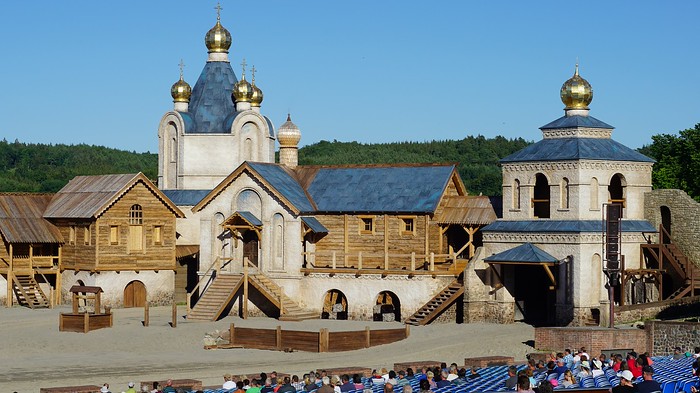
7) Störtebeker (German Medieval Theatre)
If you fancy sword fights, explosions and all sorts of theatrics, you’ll want to check out Störtebeker Festspiele. Based on the life of Klaus Stortebeker (German privateer) it reminded me a bit of the story of Robin Hood. With a mix of history, action, and theatrical flair, this festival offers a unique German cultural experience.
Legendary Tales: The Störtebeker Festspiele revolves around the life and exploits of Klaus Störtebeker. He was a famed 14th-century privateer known for his Robin Hood-like escapades along the North Sea. The festival’s play changes annually. Thus it provides a fresh take on Störtebeker’s adventures whilst ensuring that each season is exciting and different from the last.
Why It’s a Must-Try Experience
Epic Scale and Production: What makes the Störtebeker Festspiele so grand? It’s the epic scale of the production. Held at the unique open-air theater in Ralswiek, the show features elaborate sets, stunning special effects, and a large cast that performs in intricate costumes. The backdrop of the Jasmund National Park, with the Großer Jasmunder Bodden (a large bay) just beyond, adds to the performances.
Engaging Action: Each performance includes spectacular stunt sequences, dramatic sword fights, and even horseback chases. Hence, it’s a high-octane theatrical experience. The inclusion of fireworks and other pyrotechnics as the sun sets creates a visual spectacle.
How to Arrange It All
- Ticket Purchase: Tickets for the Störtebeker Festspiele can be purchased online through the festival’s official website or at various ticket outlets throughout Germany. Due to its popularity, booking tickets well in advance is recommended.
- Getting There: The festival takes place in the town of Ralswiek on Rügen Island. Rügen is accessible by car or train from major cities in Germany, and local buses can take you directly to the venue.
- Arrive Early: Get there early to enjoy the surrounding nature and secure the best seats.
- Dress Appropriately: Since it’s an outdoor event, check the weather forecast and dress accordingly. Evenings can be cool, so bringing an extra layer is wise.
Where you can watch it: Ralswiek on Rügen Island
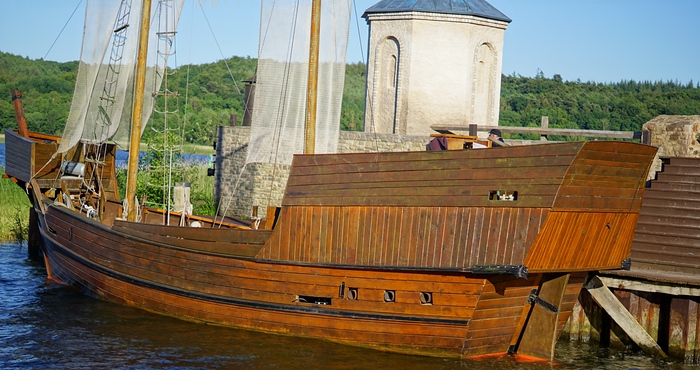
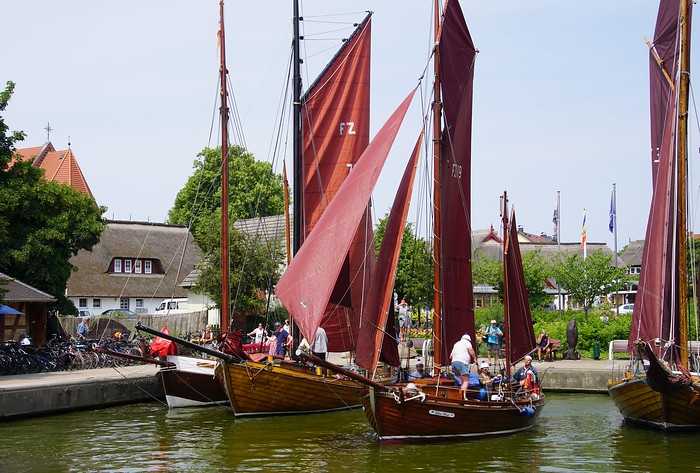
8) Regatta Boat Race
It may not be easy to watch a boat race but if you visit Wustrow in late June you may have the opportunity to witness a regatta. I found it just as fascinating to watch the reaction of the crowds as I did the actual sailboats.
Each year, the picturesque seaside town of Wustrow becomes a hub of excitement and competition with its annual regatta. Held in late June, this event draws sailing enthusiasts and spectators from across Germany and beyond. It offers a spectacular display of skill, speed, and maritime tradition.
A Celebrated Sailing Event
Why the Wustrow Regatta? Participating in or watching the Wustrow Regatta isn’t just about the thrill of the race; it’s about immersing yourself in a deep-rooted maritime tradition. The regatta is a cornerstone of local culture. It showcases the best of seamanship and community spirit in this charming Baltic Sea town.
The Thrill of Competition: Sailboats slice through the water, their sails billowing against the backdrop of Wustrow’s scenic coastline. The skill and coordination required to maneuver these boats in competitive racing are nothing short of awe-inspiring.
Community Festivities: The regatta is more than just boat races; it’s a festival. The town buzzes with activities and events that celebrate maritime culture. From local food stalls serving fresh seafood to live music and cultural performances, there’s a vibrant, festive atmosphere that makes the event a joy for visitors of all ages.
How to Arrange This Experience
- Timing: To catch the regatta, plan your visit to Wustrow in late June. The exact dates can vary slightly each year, so it’s wise to check the local tourism websites for the current year’s schedule.
- Accommodation: Since the regatta attracts a considerable number of visitors, it’s advisable to book your accommodation well in advance. Wustrow offers a range of options from seaside hotels to cozy guesthouses.
- Travel Options: Wustrow is accessible by car and public transport. If you’re coming from a major city like Berlin or Hamburg, driving might be the most convenient option. Public buses and regional trains also serve the area.
- Arrive Early: For the best experience, arrive early on the race days to secure a good spot along the shore. This also gives you a chance to explore the town and enjoy the pre-race festivities.
- Local Insights: Don’t hesitate to chat with locals or fellow spectators. They can often share insights about the best spots for viewing or interesting details about the competitors and boats.
Where you can witness it: Wustrow

9) Strandkorb – Beach Basket
Strandkorb? That’s German for beach basket and if you’re a fan of comfort, you’ll want to sit in one of them while enjoying some beach time. It’s hard to believe these unique chairs have only been in existence for just over one hundred years.
Aside from being comfortable, the chair provides protection from the sun, rain and sand. If you fall sound asleep while lounging in one, I don’t blame you 😉
This unique German invention, resembling a cross between a chair and a cabana, has been a symbol of beach comfort since the late 19th century. Offering shelter from wind and sun while providing cozy seating, the Strandkorb is a cultural staple on the sandy shores of Germany.
A Cozy Hideaway
What is a Strandkorb? The Strandkorb was designed to provide beachgoers with a wind-sheltered spot to enjoy the seaside without the discomfort of sandblasting or sunburn. Traditionally made from wicker, these charming shelters feature adjustable backrests, footrests, and sometimes even side tables and storage compartments. They come in single or two-seater versions. This makes them perfect for both solo relaxation and cozy couples’ retreats.
Unique Comfort and Privacy: Sitting in a Strandkorb, you can enjoy the sounds and sights of the sea in your own private nook, protected from the elements. It’s an ideal way to experience the beach. Whether you’re reading a book, sipping a cool drink, or simply watching the waves.
Cultural Icon: Trying it out lets you engage in a practice that has been enjoyed by generations of Germans. It provides an insight into local lifestyles and traditions.
Renting a Strandkorb
- Beachfront Rentals: Most German beaches where Strandkörbe are popular offer them for rent directly on the beach. You can usually rent them by the hour or for a full day.
- Advance Reservations: During peak tourist season, it’s a good idea to book your Strandkorb in advance. Many beach resorts allow you to reserve one online or through your hotel.
- Popular Locations: The North Sea and Baltic Sea coasts are famous for their Strandkorb-equipped beaches. Resorts on islands like Rügen or Sylt and coastal towns such as Warnemünde are particularly renowned for their Strandkorb traditions.
- Bring Essentials: While the Strandkorb protects you from the sun and wind, remember to bring sunscreen, sunglasses, and perhaps a light blanket for cooler days.
- Check the Weather: To make the most of your Strandkorb experience, choose a day with pleasant weather. Although these beach baskets offer protection, a sunny or mildly overcast day will be more enjoyable than a stormy one.
Where you can try it: Most beaches along Germany’s coasts
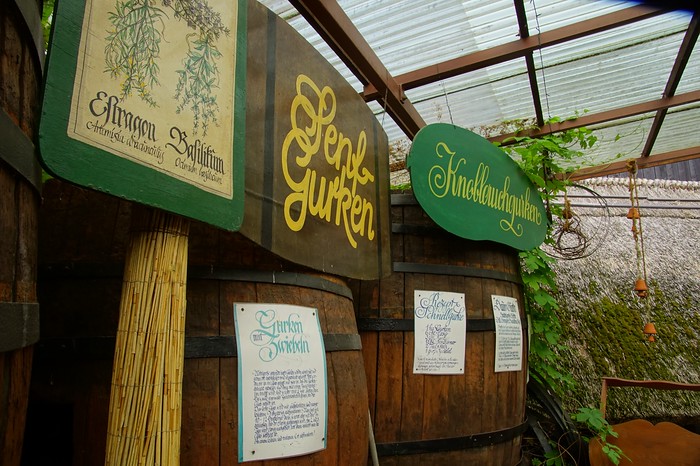
10) Gurkenmuseum (Pickle Museum)
If having a pickle from a jar just doesn’t cut it, head over to the Gurkenmuseum (Pickle Museum) where you’ll learn all about the process of making and preserving pickles. Aside from that you’ll find lots of new innovative recipes.
Every year there are pickle competitions where participants compete to be crowned the Queen of Pickle production for that given year. This unique museum delves deep into the techniques, history, and cultural significance of pickling in the region.
A Pickle Through Time
Why Visit the Gurkenmuseum? The museum showcases the evolution of cucumber pickling. This has been a staple in German cuisine, especially in Spreewald, known for its rich soil and natural irrigation. The region’s pickles are famous throughout Germany. Hence, this museum a key site for understanding local culinary practices.
Cultural Immersion: What makes the Gurkenmuseum so quirky? It’s an opportunity to immerse yourself in a part of German culinary culture that goes beyond typical tourist experiences. The museum not only displays traditional pickling tools and methods but also tells the story of how this practice influenced the social and economic fabric of Spreewald.
Interactive and Educational: The Gurkenmuseum provides a hands-on experience where visitors can learn about the different stages of pickle making. Some exhibits even allow guests to participate in the pickling process.
Sampling Delicacies: No visit to the Gurkenmuseum is complete without tasting various types of pickles. From sweet and tangy to spicy and sour, the flavors are robust and diverse.
How to Arrange Your Visit To Museum
- Location: The Gurkenmuseum is located in the heart of Spreewald, easily accessible by car or public transportation from major cities like Berlin.
- Opening Hours: Check the museum’s official website for current opening hours and any special events that might coincide with your visit.
- Guided Tours: To enhance your experience, consider booking a guided tour. These tours often provide deeper insights into the history and techniques of pickling and sometimes include a pickling workshop.
- Group Visits: If traveling in a group, pre-booking can help ensure that the museum can accommodate everyone at the same time.
Where you can visit it: Spreewald
We tried/experienced all of these activities in the following videos: Visiting Spreewald, Germany
Planning Your Trip Around German Traditions (Not Just Cities)
Once you step into places like Spreewald, Rügen, Stralsund, and tiny Wustrow, Germany feels very different: slower mornings, pickle museums, steam trains, regattas, and locals who are genuinely surprised you made it that far. In the best way possible.
The good news is you don’t have to choose between “classic Germany” and these more niche traditions. You can wrap them all into the same trip with a bit of planning: use the big cities as gateways, then spend most of your time in smaller towns where all the quirky stuff actually happens.
Where To Base Yourself For German Traditions
The North-East “Traditions Cluster”
A lot of the experiences from this article sit in one very manageable corner of Germany. Think of this as your north-east traditions loop:
- Berlin – main international gateway (and an easy city to fly in/out of).
- Spreewald – punting, open-air museums, pickle culture.
- Stralsund – Bismarck herring, Hanseatic history, gateway to Rügen.
- Rügen Island – Trabant rides, steam train, Störtebeker, Strandkorb beaches.
- Wustrow / Fischland-Darß-Zingst – regattas, Baltic seaside life, more Strandkorb time.
You can stitch these into a single trip without spending half your holiday on trains.
Choosing Your “Home Base” Style
Here’s a quick decision matrix to help you choose where to sleep most nights:
| Base Area | Vibe | Best For | Traditions Close By | Ideal Stay |
|---|---|---|---|---|
| Spreewald | Canals, forests, slow villages | Punting, cycling, foodies, families | Punting, Gurkenmuseum, open-air museums, sauna culture | 2–3 nights |
| Stralsund | Brick old town, harbour | Herring lovers, history buffs, day-trippers | Bismarck herring, maritime traditions, gateway to Rügen | 1–2 nights |
| Rügen Island | Beaches, chalk cliffs, resorts | Romantic trips, families, slow travel | Trabant tours, Rasender Roland, Störtebeker, Strandkorb | 3–4 nights |
| Wustrow / Baltic | Small seaside town, dunes | Regatta spectators, walkers, beach people | Regatta (late June), Strandkorb, coastal walks | 1–3 nights |
| Berlin | Big city, nightlife, museums | Flights, trains, urban fix before/after the trip | Easy access to Spreewald and north-east Germany by train / car | 2–4 nights |
You don’t have to stay in every single place. A nice compromise is:
- Berlin (2–3 nights)
- Spreewald (2 nights)
- Stralsund (1–2 nights)
- Rügen (3–4 nights)
Then, if your dates line up for the Wustrow regatta, add a seaside detour.
Sample Itineraries: Turning Traditions Into A Real Route
7-Day North-East Germany Traditions Loop
Perfect if you’ve got one week and you want variety: villages, sea, food, and a bit of theatre.
Day 1 – Berlin Arrival → Spreewald
- Land in Berlin, grab a quick snack at the station bakery (pretzel + coffee is the classic).
- Catch a regional train or bus toward Spreewald (think 1.5–2 hours).
- Check into a guesthouse in one of the canal villages.
- Evening walk along the water, early local dinner, then sleep off jet lag.
Day 2 – Punting, Pickles & Open-Air Museums
- Morning: punting tour through the canals. Go for a longer route that includes small villages rather than just a quick loop.
- Midday: drop by an open-air museum – wander through thatched-roof houses, workshops, barns, and village squares.
- Afternoon: visit the Gurkenmuseum or a small farm shop. Sample different styles of Spreewald pickles and grab a jar to take with you.
- Evening: sauna session if you’re staying somewhere like Spreewelten, or a simple dinner and an early night.
Day 3 – Sauna Culture & Travel To Stralsund
- Late morning: proper sauna circuit – heat, cold plunge, relaxation room. Embrace the nudity rules, follow signs, and watch how locals do it.
- Afternoon: travel north to Stralsund (train connection via Berlin or other hubs).
- Evening: check into a small hotel near the old town and do a short walk among the brick-gothic facades and harbour.
Day 4 – Stralsund & Bismarck Herring → Rügen
- Breakfast in a bakery, then head to the harbour area.
- Lunch: Bismarck herring sandwich from a local spot; eat it overlooking the water.
- Optional: short museum visit or harbour walk.
- Afternoon: cross over to Rügen Island – by train, bus, or car.
- Evening: check into a guesthouse in one of the seaside resorts (Binz / Sellin / Göhren), then beach stroll.
Day 5 – Rügen: Trabant & Steam Train
- Morning: Trabant tour around part of the island – chalk cliffs viewpoints, small villages, Baltic countryside.
- Afternoon: hop aboard the Rasender Roland steam train. Ride one scenic section and hop off in another town for ice cream or cake.
- Evening: sunset from a pier or the beach, then dinner in a local restaurant.
Day 6 – Rügen: Störtebeker & Strandkorb Time
- Daytime: rent a Strandkorb on the beach. Read, nap, snack, repeat.
- Late afternoon/early evening: head to Ralswiek for the Störtebeker Festspiele if it’s in season.
- Night: enjoy the full medieval theatre with sword fights, ships, fireworks, and a very enthusiastic crowd.
Day 7 – Optional Wustrow Detour Or Back To Berlin
Option A – Wustrow & Regatta (if late June)
- Travel to Wustrow area.
- Watch the boats slice across the Baltic, snack at food stalls, soak up the seaside festival mood.
- Overnight nearby, then head back to Berlin next day.
Option B – Straight Back To Berlin
- Make your way back to Berlin for one last evening of city energy before your flight.
3–4 Day Short Break Ideas
If you’re based in Berlin or flying into Hamburg, you can still get one or two of these traditions in a long weekend.
Spreewald Traditions Weekend (3 Days)
Day 1
- Berlin → Spreewald, check-in, evening village walk.
Day 2
- Morning punting tour, afternoon open-air museum, evening sauna.
Day 3
- Short walk or bike ride between villages, pickle tasting, then back to Berlin.
Rügen Highlights Long Weekend (4 Days)
Day 1
- Travel to Rügen, check into a seaside town.
Day 2
- Trabant tour + Strandkorb time.
Day 3
- Rasender Roland steam train + small hikes or cliff viewpoints.
Day 4
- If the season lines up, Störtebeker night before heading home; otherwise, lazy brunch and trip back to the mainland.
Budget Expectations: What These Traditions Actually Cost
You don’t need to be rich to enjoy saunas, Strandkorb, and steam trains, but it helps to know what you’re walking into.
Rough Daily Budget (Per Person)
| Style | Accommodation | Food & Drink | Activities & Extras | Total (Very Rough) |
|---|---|---|---|---|
| Shoestring | Hostel / small room | Bakery, supermarkets, 1 cheap hot meal | One paid activity every 1–2 days | 70–100 EUR/day |
| Comfortable | Guesthouse / mid-range hotel | Mix of restaurants + bakery lunches | 1–2 paid activities most days | 110–160 EUR/day |
| Splash-Out | Nice hotels / resort | Sit-down meals, seafood feasts | Multiple activities, theatre, longer tours | 170–250+ EUR/day |
Typical Activity Costs (Ballpark)
- Punting tour (group): moderate
- Open-air museum: small entrance fee
- Sauna day pass: small to moderate, more for fancy spas
- Trabant tour: moderate to high depending on duration and group size
- Rasender Roland: small to moderate depending on distance
- Störtebeker Festspiele ticket: moderate, more for prime seats
- Strandkorb rental: small to moderate for half-day or full day
If you’re trying to keep things tight, the easiest places to save are:
- Eat bakery breakfasts and simple lunches, then pick one nice dinner.
- Do one “big” activity per day rather than stacking three.
- Use regional trains and buses instead of taxis where possible.
Getting Around: Trains, Buses Or Car?
You can do this whole thing by public transport, but a car adds a lot of flexibility in the rural bits. Here’s a quick comparison:
| Mode | Pros | Cons | Best For |
|---|---|---|---|
| Train | Comfortable, scenic, no driving stress | Doesn’t reach every village directly | Berlin–Spreewald–Stralsund–Rügen |
| Bus | Reaches smaller towns, often cheap | Slower, less frequent on weekends/evenings | Short hops between local towns |
| Car | Maximum flexibility, easy detours, beach hopping | Parking costs, traffic near resorts, rental rules | Families, groups, festival nights |
If you hate driving, stick to trains and occasional buses/taxis and choose your bases carefully (Spreewald town centre, Stralsund, big Rügen resorts). If you love road trips, renting a car turns this into a very easy coastal loop.
When To Go: Seasons, Weather & Festival Timing
Germany changes character completely with the seasons. These traditions are especially tied to late spring, summer and early autumn.
Season Snapshot
| Season | Weather & Atmosphere | Best For | Watch Out For |
|---|---|---|---|
| Spring (Apr–May) | Cool to mild, fresh, fewer crowds | Saunas, punting, early hikes, cheaper stays | Some seasonal attractions not fully open |
| Summer (Jun–Aug) | Warm, busy, long days | Regatta, Strandkorb, Störtebeker, beach time | Higher prices, need to book ahead |
| Autumn (Sep–Oct) | Mild, colourful, calmer | Steam trains, forest walks, cosy food | Shorter days, some events ending |
| Winter (Nov–Mar) | Cold, quiet, short days | Saunas, city breaks, Christmas markets | Many coastal traditions shut or limited |
If your heart is set on:
- Störtebeker Festspiele – plan for summer.
- Regatta in Wustrow – late June.
- Beach Strandkorb days – late spring through early autumn.
- Sauna culture – honestly, any time, but especially great in colder months.
Cultural Etiquette: How Not To Be “That Tourist”
You don’t have to be perfect, but a few small things go a long way in smaller German towns.
Sauna Etiquette Basics
- Nudity is normal in the sauna area – towels are for sitting on, not for wrapping tightly around yourself. Swimming pools linked to the sauna may have different rules.
- Shower before entering the sauna and again after swimming.
- Keep voices low; people are there to relax.
- Follow the signage for quiet zones and textile-free areas – they’re there for a reason.
If you’re unsure, just watch what locals do and mirror it.
Food & Restaurant Habits
- It’s totally normal to linger over meals. Don’t expect to be rushed out.
- Cash is still handy, especially in small towns and at markets.
- A simple “Guten Tag” when you walk into a small place and “Tschüss” when you leave will instantly soften people up.
- Tipping: round up or add a small percentage on top and hand it directly with a “Danke schön”.
At Events & In Villages
- At things like the regatta or Störtebeker, ask yourself if you’d be okay with someone taking the same photo of you. If not, don’t post super-zoomed images of strangers looking uncomfortable.
- Keep noise levels down late at night – these might be holiday towns for you, but they’re home for someone else.
- Learn a couple of phrases beyond hello/thank you; even a clumsy “Entschuldigung, sprechen Sie Englisch?” feels more respectful than launching straight into English.
Layering In More Everyday German Traditions
While you’re chasing the “headline” experiences like steam trains and regattas, there are a bunch of small everyday traditions that are just as memorable.
Beer Garden Evenings
Even outside of Bavaria, you’ll find local beer gardens and outdoor terraces where everyone piles in on a warm evening.
- Share a long table with strangers.
- Order something simple – a beer or a Radler (beer + lemonade) and a plate of sausages, salad, or schnitzel.
- Stay until the light fades and people start reaching for jackets.
Bakery Culture
German bakeries are the heartbeat of small towns.
- Start your day with Brötchen (bread rolls) and coffee.
- Grab cake in the afternoon – Germans take their “Kaffee und Kuchen” seriously.
- Use bakeries as your budget lunch: sandwiches, pastries, and sometimes small hot dishes.
Sunday Slowness
On Sundays, many shops close and towns slow down.
- Plan independent stuff: walks, beach time, bike rides, steam trains, long saunas.
- Stock up on snacks and drinks the day before.
- Embrace it instead of fighting it – it actually fits the slower rural rhythm really well.
German Traditions & Culture Travel FAQ: Real Questions, Practical Answers & Local-Style Tips
How many days do I really need to enjoy these German traditions without rushing?
It depends. If you want to actually feel the slower rhythm of Spreewald, Rügen, Stralsund and Wustrow instead of just ticking boxes, I’d say 7–10 days is the sweet spot. In a week you can do a loop that starts or ends in Berlin, spend a couple of nights in Spreewald, one in Stralsund and three or four on Rügen, with maybe an extra seaside night if your dates match the regatta. With only 4–5 days you can still have a great time by focusing on just Spreewald plus Rügen and skipping Wustrow, but expect more time on trains and fewer lazy afternoons in Strandkorb chairs or saunas. If you’re more of a slow traveller, stretching this to 10–12 days lets you repeat favourite traditions (another sauna circuit, a second steam-train ride, an extra pickle tasting) without feeling rushed at all.
Is it realistic to visit Spreewald, Stralsund, Rügen and Wustrow on one trip?
Yes. The places in this article sit in a very manageable corner of north-east Germany, and they link together nicely. Berlin works as your main gateway; from there you drop down into Spreewald for canals and pickles, head up to Stralsund for herring and Hanseatic history, then roll over to Rügen Island for beaches, steam trains and theatre. Wustrow is more of a “bonus” stop if your dates match the regatta or you just want an extra Baltic seaside town. The key is to avoid changing bases every single night. Pick two or three main bases (for example Spreewald, Stralsund or Rügen, plus Berlin) and treat the other places as day trips or short detours so you’re spending more time experiencing traditions and less time packing and unpacking.
When is the best time of year to experience punting, Strandkorb, regattas and the Störtebeker Festspiele?
Summer. Most of the experiences in this article are built around long days and decent weather. Punting tours in Spreewald run roughly from spring through autumn, with the most frequent departures between April and October when the canals are fully open and the biosphere reserve is at its greenest. The Störtebeker Festspiele runs as an open-air summer production in Ralswiek, typically from late June into early September each year. Wustrow’s traditional Zeesenboot regatta is usually held in late June, and Strandkorb beach chairs are a fixture of the main seaside season on Germany’s coasts, generally from around May to September when the beach infrastructure is fully set up. If you want to combine punting, Strandkorb days, theatre nights and maybe the regatta, aim for June to early September; May and late September are great “shoulder season” options with fewer crowds but slightly cooler water and air temperatures.
Do I need to rent a car for this German traditions route, or can I rely on trains and buses?
Nope, a car is optional rather than essential. You can comfortably stitch this route together with trains and buses as long as you don’t mind checking timetables. Spreewald is reachable from Berlin by regional trains plus short local transfers, Stralsund sits on a well-served rail line up the Baltic coast, and Rügen Island is connected by bridge and rail, with local trains and buses fanning out to the seaside towns. The Rasender Roland steam train itself links key towns in the south-eastern part of Rügen, connecting places like Putbus, Binz, Sellin and Göhren, so once you’re on the island you can turn the transport into part of the fun. Wustrow is the fiddliest by public transport, but still reachable via a mix of regional trains and buses. If you’re travelling as a family, carrying a lot of luggage or trying to hit specific theatre or regatta times, a rental car gives you more freedom for late-night returns and beach detours, but it’s not mandatory.
How much should I budget per day if I want to mix saunas, steam trains and seaside villages?
Roughly. For this kind of traditions-focused itinerary, most travellers fall into one of three rough bands per person per day. On a shoestring, 70–100 EUR covers a basic guesthouse or private room, bakery breakfasts, supermarket lunches, one simple hot meal and a paid activity every day or two. If you like a bit more comfort, think 110–160 EUR for a nice guesthouse or midrange hotel, sit-down meals most days and one or two paid activities like punting, Strandkorb rental, sauna sessions or a short steam-train ride. At the “treat yourself” end (170–250+ EUR), you’re looking at character hotels, regular restaurant meals, longer private tours and prime seats for Störtebeker. As a benchmark, a standard Spreewald punting tour of around 2–3 hours typically runs in the 17–23 EUR range per person, and a full Rasender Roland steam-train ride on Rügen is roughly 15 EUR for adults for the complete route. Saunas, Strandkorb rentals and theatre tickets then layer on top depending on how many days you pack with activities.
Is German sauna culture really that intense, and how awkward is it for first-timers?
A bit. The nudity and mixed-gender aspect can feel like a big deal the first time you walk into a German sauna, but locals treat it as completely normal, not sexual. Once you’ve done a full heat–cold–rest cycle or two, the awkwardness tends to fade and you realise everyone is simply focused on relaxing. Expect clear rules: shower before you enter, always sit or lie on your towel (for hygiene), keep voices low and respect any “Ruhebereich” (quiet area) signs. Pools linked to the sauna area may have different “textile” rules, so it’s worth checking the signs. If you’re nervous, choose a spa that has multiple zones so you can start with the pool and relaxation areas, watch how locals handle the routines, and then work up to a full sauna session when you feel ready.
Are these German traditions and small towns suitable for kids and family travel?
Absolutely. This whole corner of Germany is brilliant for family trips if you like mixing soft adventure with low-key cultural experiences. Kids tend to love the punting in Spreewald because the boats move slowly and there’s always something to look at along the canals. Open-air museums are basically historical playgrounds with farm animals, old tools and big spaces to run around. On Rügen, the Rasender Roland steam train, Strandkorb beach days and the general “seaside resort” vibe are big hits with children, and Störtebeker Festspiele often draws families too, thanks to its pirates, sword fights and fireworks. Just keep in mind that summer festivals and regattas can run late into the evening, so younger kids may fade before the finale. Overall, if you plan in snack breaks, playground stops and the occasional ice cream bribe, this itinerary works very well as a multi-generational trip.
How accessible are Spreewald’s canals, Rügen’s steam train and Strandkorb beaches for travellers with limited mobility?
Mixed. Some of these traditions are naturally easier than others if you have mobility challenges. In Spreewald, standard punting boats usually require stepping down into a low, flat vessel, which can be tricky for some travellers, though a few operators offer more accessible boats if you contact them in advance. Open-air museums can involve uneven paths and cobblestones, but the main routes are often reasonably flat, and many have at least partially accessible buildings or exhibitions. On Rügen, the Rasender Roland steam train runs on a regular timetable between towns like Putbus, Binz and Göhren, and the main stations typically have level or ramped access, though older carriages and platforms may still involve a step up. Strandkorb beaches can be the trickiest: some resorts have wooden boardwalks or beach mats that make it easier to reach the chairs, while others still require navigating soft sand. If accessibility is a priority, it’s worth choosing bigger seaside resorts, emailing your accommodation ahead of time and asking very specific questions about steps, ramps, lifts and accessible bathrooms.
Are places like Spreewald, Rügen and Wustrow safe, and are there any scams I should watch out for?
Generally yes, they’re very safe. Smaller German towns and rural areas tend to feel calm and low-key, especially compared to big-city nightlife districts. Most travellers’ “issues” here are more about missed connections or sunburn than crime. That said, it’s still smart to use common sense: keep an eye on your bag in busy train stations, festivals and regatta crowds, avoid leaving valuables unattended on the beach while you swim, and be wary of anyone trying to distract you while a friend reaches for your pockets. Compared with major European capitals, you’ll find far fewer organised scams; you’re much more likely to overspend on impulse snacks or souvenirs than be deliberately targeted. If something feels off, just walk away or politely say no and move on.
Can I do any of these traditions as a day trip from Berlin, or is it better to stay overnight?
Both, but overnight wins. Spreewald is the classic day trip from Berlin: you can leave the city in the morning, be on a punting boat by late morning or lunchtime, enjoy a few hours on the canals plus a stroll, and still get back to your Berlin base after dinner. Rügen and Stralsund, however, really deserve at least one or two nights; the journey is long enough that doing them as day trips would feel like spending all day on trains for just a quick wander. Wustrow and regatta days also work best as an overnight or weekend because you’ll want the flexibility to hang around for the atmosphere, food stalls and changing wind conditions. If time is tight, I’d do Spreewald as a standalone day trip from Berlin, then save Rügen, Stralsund and Wustrow for a separate multi-day adventure when you can slow down and actually enjoy being there.
Do I need to speak German to enjoy rural areas like Spreewald and Rügen?
Not really. You can absolutely get by with English and a handful of friendly phrases, especially in places that see regular tourism. In hotels, guesthouses, restaurants near the main squares and on organised tours, you’ll usually find at least one person who’s comfortable switching to English. Where German helps most is with small interactions: reading simple signs, understanding a sauna rule board, buying snacks at a bakery or following brief announcements on trains. Even then, basic phrases like “Guten Tag”, “Bitte”, “Danke” and “Entschuldigung” go a long way. If you’re worried, download an offline translation app before you go, take screenshots of key words (sauna etiquette, Strandkorb rental, regatta dates), and treat language as part of the adventure rather than a barrier.
What should I pack for a trip that mixes saunas, beaches, theatres and village walks?
Layers. North-east Germany can swing from hot seaside afternoons to cool evenings pretty quickly, especially near the coast. Pack a light waterproof jacket, a warm layer (like a fleece or sweater), comfortable walking shoes or trainers, and something you don’t mind getting a bit sandy or muddy on village paths and forest trails. For saunas, you’ll usually need at least one large towel to sit on, flip-flops and a swimsuit if you plan to use any textile pool areas; many spa complexes rent or sell towels and robes, but it’s cheaper to bring your own if you have space. For beaches and Strandkorb days, bring swimwear, quick-dry clothes, sunglasses and strong sunscreen; the Baltic sun can be sneaky on breezy days. A small daypack, reusable water bottle and a lightweight scarf or buff round things off nicely for both city and countryside.
How far in advance should I book punting tours, Strandkorb rentals and Störtebeker tickets?
It depends on the season and your stress tolerance. For Spreewald punting, in shoulder seasons you can often just show up and hop on the next shared boat, but in peak summer weekends and holidays it’s worth reserving a specific departure, especially if you want a longer route or a private boat. Strandkorb chairs on busy Baltic beaches can sell out for the best spots on sunny weekends; some resorts let you reserve online or via your hotel a day or two in advance, while on quieter weekdays you can often just rent one on the spot. For Störtebeker Festspiele, I’d treat it more like a theatre or concert: seats on popular dates, especially summer weekends and holiday periods, can sell out, so booking several weeks (or even months) ahead gives you better choice on seating and prices. If your whole route is built around that show or the Wustrow regatta, lock those pieces in first, then fill in the punting and Strandkorb bookings around them.
Can I still experience these traditions in winter, or should I stick to spring and summer?
For this specific trip, spring to autumn is much better. Winter in Germany has its own magic—Christmas markets, cosy saunas, city breaks—but many of the traditions in this article either slow down or pause completely outside the warmer months. Punting in Spreewald is very much a spring–autumn thing, with the busiest and most scenic period between about April and October. Strandkorb chairs and Baltic beach life are built around the main seaside season from roughly May to September. The Wustrow regatta and Störtebeker Festspiele are firmly summer events, with regattas in late June and theatre shows across the core summer months. The Rasender Roland steam train still runs in winter but on a reduced timetable. If you’re travelling in colder months, I’d lean into sauna culture, city stays and maybe a shorter coastal visit, then come back in late spring or summer for the full “traditions loop”.
What can I eat if I’m not into pickled herring, heavy meat dishes or beer?
You’ll be fine. Germany has definitely moved beyond the old stereotype of “sausages or nothing”, especially in places that see regular visitors. Bakeries are your best friend for easy lunches: fresh bread rolls with cheese, salad-filled sandwiches, quiches, seasonal cakes and good coffee. Many restaurants now have at least one or two vegetarian or lighter dishes on the menu, such as flammkuchen with onions and cheese, salads, pasta, grilled fish or vegetable plates, and it’s increasingly common to find clearly marked vegetarian and vegan options. On the coasts you can lean into fish that isn’t pickled, like grilled or baked fillets, and simple potato dishes. If you don’t drink beer, try a Radler (beer mixed with lemonade, lower alcohol), local wines, apple spritzers or just classic mineral water. Between supermarkets, bakeries and guesthouse breakfasts, it’s actually quite easy to eat well without living on Bismarck herring and heavy meat every day.
Germany Travel Videos (German Culture and Traditions)
Punting in Spreewald and feeding penguins at Spreewelten, Germany
Störtebeker Festspiele (Medieval German Theatre) – Rügen, Ralswiek, Germany
Visiting Rügen Island, Germany
Stralsund City Tour, Germany
Regatta Boat Race and Wustrow City Tour, Germany
Which of these German culture and traditions most interests you? Do you know of any particular German culture and/or tradition that you felt I left out here? Please let me known in the comments section below. Our trip was part of a partnership with the Germany Tourism board this past summer.

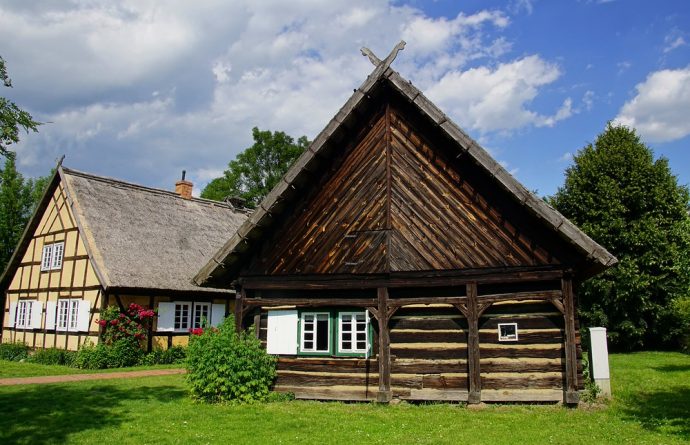
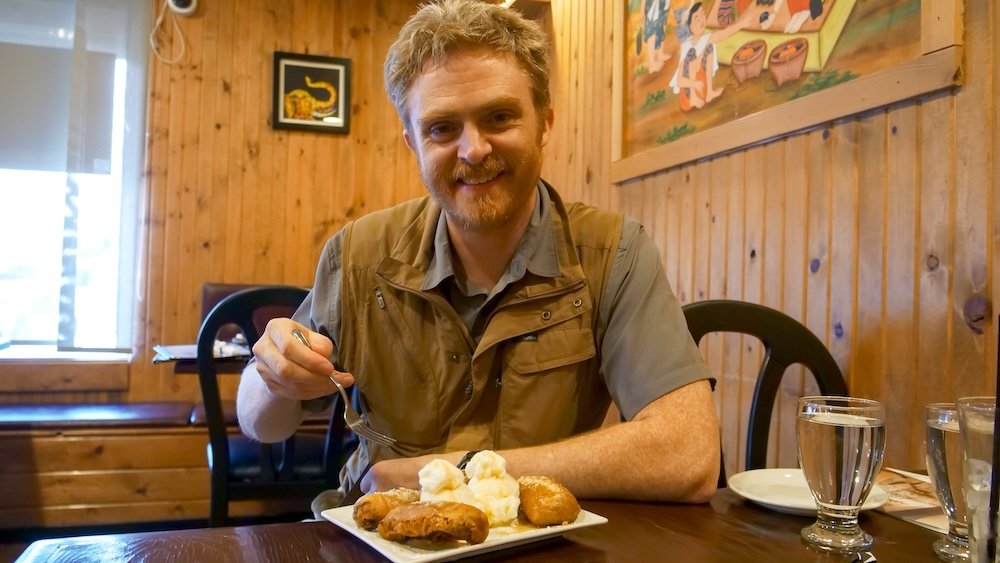
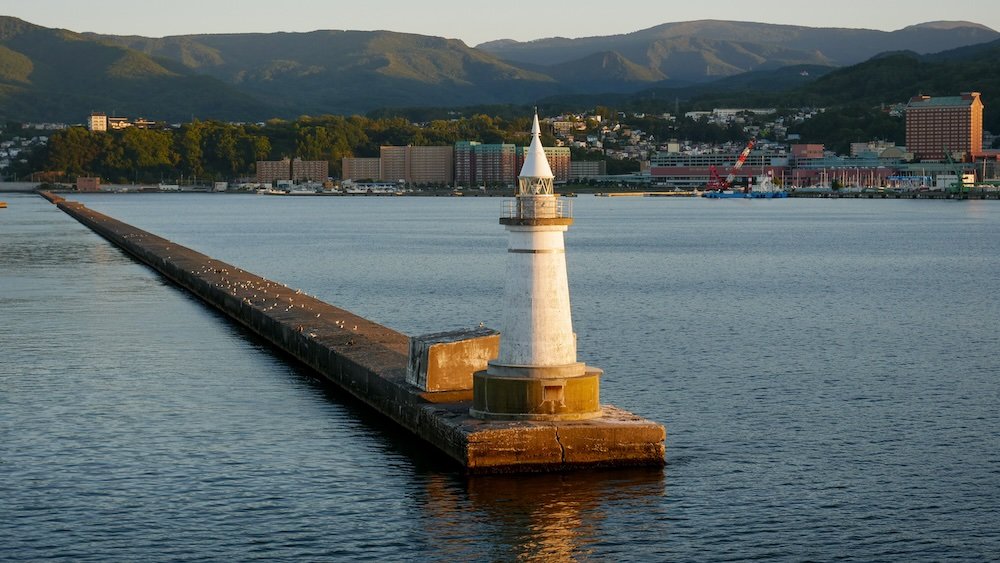

A warm and insightful read! The guide beautifully highlights Germany’s soul—from the communal sauna culture and Gemütlichkeit (cozy comfort) to the timeless traditions of greeting etiquette and Oktoberfest. Perfect for travelers who want to dive into authentic German culture with both practical tips and charming storytelling.
What a fascinating read! 🇩🇪 I had no idea how deep and diverse German traditions are. The way Germany blends modern life with centuries-old customs is truly impressive. I especially loved learning about the Christmas markets and Oktoberfest—those are definitely on my bucket list now! The part about “Sundays being for rest” really stood out too. Thanks for sharing such unique insights—this post will be super helpful for anyone planning to visit Germany for the first time!
Such an insightful post on German traditions and culture! You’ve beautifully highlighted the unique experiences that make visiting Germany truly special.
I love how you’ve highlighted the cultural richness of Germany! The traditions like Oktoberfest and Christmas markets truly bring the country to life for visitors. Your insights into these unique experiences are definitely making me want to explore Germany even more. Thanks for sharing!
It’s an eye-opener for those who want to delve deeper into German life beyond the typical tourist spots. From punting down canals to indulging in Bismarck Herring, these suggestions will give travelers a unique and authentic view of Germany. <3
This post is a great introduction to German culture for first-time visitors. The detailed look at traditions like beer culture and local festivals gives a real sense of what makes Germany unique. Thanks for sharing these insights!
Your insightful exploration of German traditions offers a captivating glimpse into the country’s rich cultural tapestry!
You have created an excellent content about the tour. I think proper guidelines are needed to make a tour enjoyable. Our meticulously crafted guidelines, especially for the Best Vatican City Tour, allow travelers to enjoy a hassle-free splendid time. A proper guide can give a traveler a unique and enriching experience.
Great post!!! I’m going to visit Germany in June with my wife.
Right now I’ve showed her your tips and awesome pictures. Thank you very much!!!
Here in Brazil we appreciate and respect the German culture, a very decent and hard working people who also helped to create our country and our cultures, we are very grateful to the Germans. The article is wonderful, my congratulations Samuel
Punting looks like it’d be an absolutely amazing experience. It’s something that I hope my girlfriend and I will someday be able to do
Hi Sam, You bring back memories from my home country! Pretty much spot on! How beautiful is the Spreewald? I have fond memories of the East German countryside (I used to live in Berlin for a while), in particular the castles. Many of them had been quite neglected during GDR times and it was interesting to see what would become of them: some were in private hands, others converted into luxury hotels and convention centres, others into museums. Ha! Now I am straying too far from the topic. Anyway, lovely article 🙂
The vintage train ride is an amazing experience. I’ve been on three ocasions with vintage trains in Germany, Romania and Slovakia. Steam locomotives, nice wagons and friendly people. A good weekend trip, I would say.
If it happens to have a sunny day, that’s a bonus 🙂
Hi Sam, thanks very much for sharing your post and the terrific pictures!
To tell you the truth: your article only reflects a small number of traditions of the Northeastern regions of Germany. The largest country of the European Union has a lot more to offer – a long and rich history, culture and very different landscapes!
You’ll probably find another billion different perspectives on to my country – if you keep on searching…
Nice to know about these off-beat German traditions! Punting and open air museum sound like fun activities to do.
Beautiful photos. Yes to vintage trains, and a big no to the herring! 😉
Germany has so much to offer… something for every visitor. I would love to set sail in an medieval ship. OK, at least to get on board of one.
Oh man a pickle museum!!!! Awesome suggestion!
When you live near a place you don’t find it special or worth exploring, at least not me… but when I see this post I feel like I’d definately have to start exploring our neighbouring country more often. Thanks for sharing.
Germany seems really a very beautiful country. Being Asian, We usually hear only of UK, France,Spain and Italy as the best places to visit.
the beer we had there is just awesome and i cant forgot that movement and it still blinking in my eyes.
Great post. Nice pictures. I love this blog.
Looking forward to heading to Germany over xmas. It seems like there are some very unique aspects to the culture, especially to be seen outside of the big cities and tourist locations. Cheers for the tips. Def keen for a bit of punting, not so sure in winter though, will have to rug up!
Wow!—
It’s awesome ,such type of ruegen island, Stoertebeker festival, stralsund, wustrow regatta travel trip we find in Germany. you also get this type of amazing trip when you plan visit London.
I went German few years back but not visited all the places. Your blog is very informative and I will go again for spending my time in German in coming holidays.
Hi Sam!!!
I love Vintage train ride !!! Ahha!! Germany is most comfortable & organized country. You will find the best combination of beer & sea food.
Amazingly described blog.. and what I loved the most is the video part.. I like the way you came up with this post.
Thanks
Oh I really want to spend more time in German.
The last time that I went, only stayed one day and can’t visit any place.
Your blog is so amazing!
Kisses from Italy
Although I’ve been to Germany several times, I’ve never heard of these places or attractions. Definitely means they’re on the list for the future. Love quirky museums so Gurkenmuseum is a must-see. Good to get your recommendations for something different.
Medieval ships and vintage trains? Seems like a childhood fantasy I made up with my imagination. Damn, I went to Munich but I didn’t explore anywhere else in Germany and kicking myself for it now. I’ll be back sometime soon though, always loving your Germany features. Great photos man!